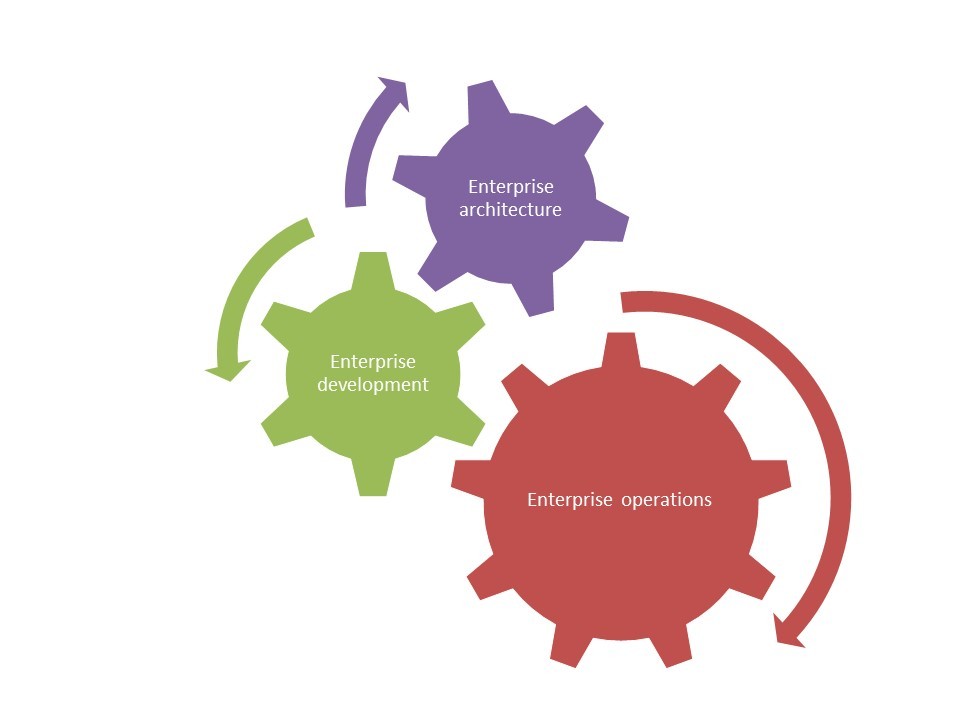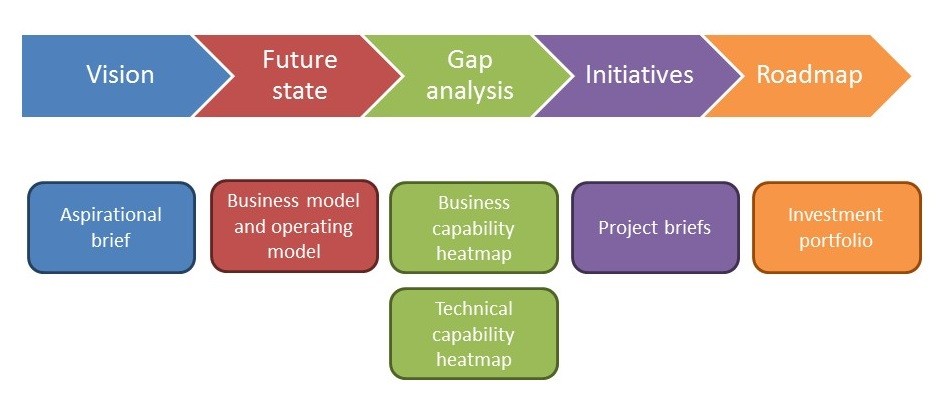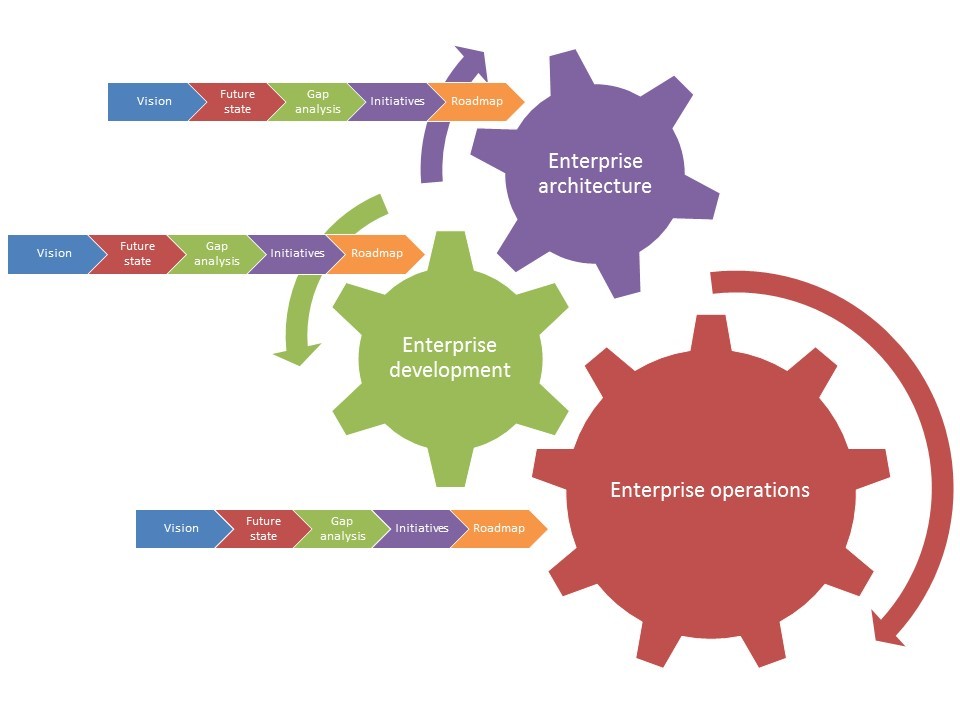Wherever an enterprise engages in architectural activities, there are three key lifecycles which come into play: enterprise operations, managing the entire lifecycle from prospective customer to satisfied customer; enterprise development, managing strategy, innovation and change, delivering and embedding new or improved capabilities within enterprise operations; enterprise architecture, managing the structures and principles through which enterprise operations and development are effected.
Any engagement needs to assess:
- the current position within these three key lifecycles
- the maturity of the organisation with respect to each of these lifecycles
in determining where to direct efforts to deliver the greatest value to the organisation.
In this respect, the approach shown above for architecting enterprises provides an effective mechanism for managing each of the lifecycles, prompting an assessment and appreciation of:
- vision
- future directions
- capability gaps
- initiatives addressing gaps
- program (roadmap) of activities in train
This could lead to three inter-related capability development cycles for maturing the architecture capability, development capability and operations capability.
Where is your organisation placed in terms of its architecture, development and operations maturity?
To what extent does your strategy development take account of your maturity in these three domains?
To what extent does your program planning and execution explicitly take account of these differing levels of maturity, including:
- delivery risks arising from varying maturity levels?
- adaptive approaches which allow for the necessary learning required for successful delivery?
- synergies which can be pursued to leverage investment and effort towards enhancing maturity in all three domains?
Article by channel:
Everything you need to know about Digital Transformation
The best articles, news and events direct to your inbox










